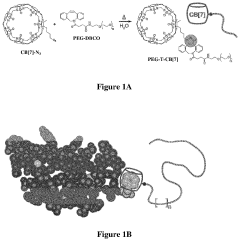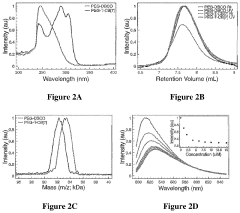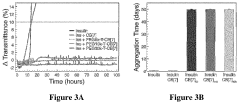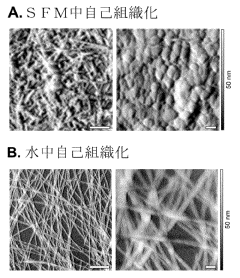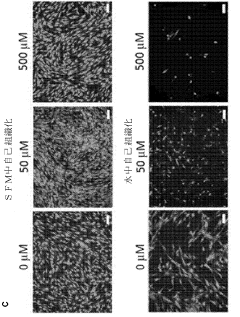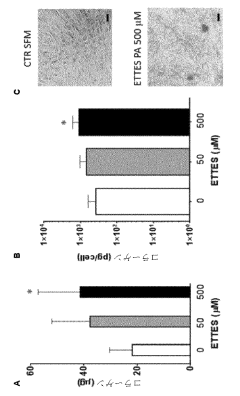Ethyl Propanoate-Enabled Advances in Supramolecular Chemistry
JUL 22, 20259 MIN READ
Generate Your Research Report Instantly with AI Agent
Patsnap Eureka helps you evaluate technical feasibility & market potential.
Ethyl Propanoate in Supramolecular Chemistry
Ethyl propanoate, also known as ethyl propionate, has emerged as a significant player in the field of supramolecular chemistry. This simple ester compound, with its unique structural and chemical properties, has opened up new avenues for research and applications in this rapidly evolving domain. The integration of ethyl propanoate into supramolecular systems has led to innovative approaches in molecular recognition, self-assembly processes, and the design of functional materials.
In the realm of molecular recognition, ethyl propanoate has demonstrated remarkable versatility. Its ester group serves as both a hydrogen bond acceptor and a weak hydrogen bond donor, enabling it to participate in a variety of non-covalent interactions. This characteristic has been exploited in the development of selective molecular receptors and sensors. Researchers have successfully incorporated ethyl propanoate moieties into macrocyclic structures, creating host molecules capable of recognizing specific guest species with high affinity and selectivity.
The self-assembly properties of ethyl propanoate-containing molecules have been extensively studied. The compound's ability to form weak intermolecular interactions has been harnessed to create supramolecular polymers and gels. These materials exhibit dynamic properties, allowing for stimuli-responsive behavior and self-healing capabilities. Such features are particularly valuable in the development of smart materials for applications ranging from drug delivery systems to adaptive coatings.
In the field of crystal engineering, ethyl propanoate has proven to be a valuable tool. Its incorporation into crystal structures has led to the formation of novel supramolecular architectures with unique physical and chemical properties. These structures have found applications in areas such as gas storage, separation processes, and heterogeneous catalysis. The ability to fine-tune the properties of these materials by modifying the ethyl propanoate component offers a high degree of control over their functionality.
The role of ethyl propanoate in supramolecular catalysis has also gained significant attention. When integrated into supramolecular catalytic systems, it can act as a co-factor or modulator, influencing reaction rates and selectivities. This has led to the development of more efficient and environmentally friendly catalytic processes, particularly in organic synthesis and green chemistry applications.
Furthermore, the use of ethyl propanoate in supramolecular chemistry has extended to the field of biomimetic systems. Researchers have utilized its properties to create artificial enzyme-like structures and molecular machines that mimic biological processes. These advancements hold promise for applications in biotechnology and nanotechnology, potentially leading to new therapeutic approaches and molecular-scale devices.
In the realm of molecular recognition, ethyl propanoate has demonstrated remarkable versatility. Its ester group serves as both a hydrogen bond acceptor and a weak hydrogen bond donor, enabling it to participate in a variety of non-covalent interactions. This characteristic has been exploited in the development of selective molecular receptors and sensors. Researchers have successfully incorporated ethyl propanoate moieties into macrocyclic structures, creating host molecules capable of recognizing specific guest species with high affinity and selectivity.
The self-assembly properties of ethyl propanoate-containing molecules have been extensively studied. The compound's ability to form weak intermolecular interactions has been harnessed to create supramolecular polymers and gels. These materials exhibit dynamic properties, allowing for stimuli-responsive behavior and self-healing capabilities. Such features are particularly valuable in the development of smart materials for applications ranging from drug delivery systems to adaptive coatings.
In the field of crystal engineering, ethyl propanoate has proven to be a valuable tool. Its incorporation into crystal structures has led to the formation of novel supramolecular architectures with unique physical and chemical properties. These structures have found applications in areas such as gas storage, separation processes, and heterogeneous catalysis. The ability to fine-tune the properties of these materials by modifying the ethyl propanoate component offers a high degree of control over their functionality.
The role of ethyl propanoate in supramolecular catalysis has also gained significant attention. When integrated into supramolecular catalytic systems, it can act as a co-factor or modulator, influencing reaction rates and selectivities. This has led to the development of more efficient and environmentally friendly catalytic processes, particularly in organic synthesis and green chemistry applications.
Furthermore, the use of ethyl propanoate in supramolecular chemistry has extended to the field of biomimetic systems. Researchers have utilized its properties to create artificial enzyme-like structures and molecular machines that mimic biological processes. These advancements hold promise for applications in biotechnology and nanotechnology, potentially leading to new therapeutic approaches and molecular-scale devices.
Market Applications of Ethyl Propanoate-Based Supramolecules
Ethyl propanoate-based supramolecules have emerged as versatile building blocks in various market applications, leveraging their unique properties and molecular interactions. In the pharmaceutical industry, these supramolecular structures have shown promise in drug delivery systems, enhancing the solubility and bioavailability of poorly water-soluble drugs. The controlled release mechanisms enabled by ethyl propanoate-based supramolecules allow for targeted drug delivery, potentially reducing side effects and improving therapeutic efficacy.
The cosmetics and personal care sector has also embraced ethyl propanoate-based supramolecules for their ability to form stable emulsions and encapsulate active ingredients. These properties have led to the development of advanced skincare formulations with improved texture, stability, and efficacy. Additionally, the fragrance industry has utilized these supramolecular structures to create long-lasting scents and control the release of volatile compounds.
In the field of materials science, ethyl propanoate-based supramolecules have found applications in smart materials and self-healing polymers. The reversible nature of supramolecular interactions allows for the creation of adaptive materials that can respond to external stimuli, such as temperature or pH changes. This has opened up possibilities for developing advanced coatings, adhesives, and structural materials with enhanced durability and functionality.
The environmental sector has also benefited from ethyl propanoate-based supramolecules, particularly in water treatment and pollution control. These supramolecular structures have demonstrated potential in selectively capturing and removing contaminants from water, offering more efficient and sustainable purification methods. Furthermore, their ability to form porous networks has led to applications in gas storage and separation technologies, contributing to advancements in clean energy solutions.
In the electronics industry, ethyl propanoate-based supramolecules have shown promise in the development of organic electronic devices. Their self-assembly properties and tunable electronic characteristics make them attractive candidates for flexible displays, organic photovoltaics, and sensors. The ability to precisely control molecular arrangements at the nanoscale level has opened up new possibilities for miniaturization and performance enhancement in electronic components.
The food and beverage industry has also explored the potential of ethyl propanoate-based supramolecules in food packaging and preservation. These structures can form protective barriers against moisture and oxygen, extending the shelf life of perishable goods. Additionally, their ability to encapsulate flavors and nutrients has led to innovations in functional foods and controlled release of additives.
The cosmetics and personal care sector has also embraced ethyl propanoate-based supramolecules for their ability to form stable emulsions and encapsulate active ingredients. These properties have led to the development of advanced skincare formulations with improved texture, stability, and efficacy. Additionally, the fragrance industry has utilized these supramolecular structures to create long-lasting scents and control the release of volatile compounds.
In the field of materials science, ethyl propanoate-based supramolecules have found applications in smart materials and self-healing polymers. The reversible nature of supramolecular interactions allows for the creation of adaptive materials that can respond to external stimuli, such as temperature or pH changes. This has opened up possibilities for developing advanced coatings, adhesives, and structural materials with enhanced durability and functionality.
The environmental sector has also benefited from ethyl propanoate-based supramolecules, particularly in water treatment and pollution control. These supramolecular structures have demonstrated potential in selectively capturing and removing contaminants from water, offering more efficient and sustainable purification methods. Furthermore, their ability to form porous networks has led to applications in gas storage and separation technologies, contributing to advancements in clean energy solutions.
In the electronics industry, ethyl propanoate-based supramolecules have shown promise in the development of organic electronic devices. Their self-assembly properties and tunable electronic characteristics make them attractive candidates for flexible displays, organic photovoltaics, and sensors. The ability to precisely control molecular arrangements at the nanoscale level has opened up new possibilities for miniaturization and performance enhancement in electronic components.
The food and beverage industry has also explored the potential of ethyl propanoate-based supramolecules in food packaging and preservation. These structures can form protective barriers against moisture and oxygen, extending the shelf life of perishable goods. Additionally, their ability to encapsulate flavors and nutrients has led to innovations in functional foods and controlled release of additives.
Current Challenges in Ethyl Propanoate Supramolecular Systems
Despite the significant advancements in ethyl propanoate-enabled supramolecular chemistry, several challenges persist in the development and application of these systems. One of the primary obstacles is the precise control over the assembly and disassembly processes of supramolecular structures. The dynamic nature of non-covalent interactions makes it difficult to achieve consistent and predictable self-assembly, especially in complex environments.
Another major challenge lies in the stability of ethyl propanoate-based supramolecular systems under varying conditions. These structures are often sensitive to changes in temperature, pH, and solvent composition, which can lead to undesired disassembly or structural alterations. Enhancing the robustness of these systems while maintaining their dynamic properties remains a significant hurdle for researchers in the field.
The scalability of ethyl propanoate supramolecular systems presents another critical challenge. While many impressive structures have been demonstrated at the laboratory scale, translating these achievements into large-scale applications for industrial or commercial use has proven difficult. This limitation is partly due to the complexity of controlling supramolecular interactions in bulk materials and the associated costs of scaling up production.
Furthermore, the characterization of ethyl propanoate-based supramolecular structures poses unique challenges. Traditional analytical techniques often struggle to capture the dynamic nature of these systems, particularly in solution. Developing new methods for real-time monitoring and analysis of supramolecular assemblies is crucial for advancing the field.
The integration of ethyl propanoate supramolecular systems with other materials and technologies also presents ongoing challenges. Achieving seamless incorporation into existing products or processes while maintaining the desired supramolecular properties requires careful consideration of compatibility and interface interactions.
Lastly, the design of stimuli-responsive ethyl propanoate supramolecular systems with high specificity and efficiency remains a significant challenge. Creating structures that can respond rapidly and reversibly to specific external stimuli, such as light, electric fields, or chemical signals, is crucial for developing advanced functional materials and devices.
Addressing these challenges will require interdisciplinary approaches, combining expertise from chemistry, materials science, physics, and engineering. Overcoming these obstacles will pave the way for the next generation of ethyl propanoate-enabled supramolecular systems with enhanced performance and broader applicability across various fields.
Another major challenge lies in the stability of ethyl propanoate-based supramolecular systems under varying conditions. These structures are often sensitive to changes in temperature, pH, and solvent composition, which can lead to undesired disassembly or structural alterations. Enhancing the robustness of these systems while maintaining their dynamic properties remains a significant hurdle for researchers in the field.
The scalability of ethyl propanoate supramolecular systems presents another critical challenge. While many impressive structures have been demonstrated at the laboratory scale, translating these achievements into large-scale applications for industrial or commercial use has proven difficult. This limitation is partly due to the complexity of controlling supramolecular interactions in bulk materials and the associated costs of scaling up production.
Furthermore, the characterization of ethyl propanoate-based supramolecular structures poses unique challenges. Traditional analytical techniques often struggle to capture the dynamic nature of these systems, particularly in solution. Developing new methods for real-time monitoring and analysis of supramolecular assemblies is crucial for advancing the field.
The integration of ethyl propanoate supramolecular systems with other materials and technologies also presents ongoing challenges. Achieving seamless incorporation into existing products or processes while maintaining the desired supramolecular properties requires careful consideration of compatibility and interface interactions.
Lastly, the design of stimuli-responsive ethyl propanoate supramolecular systems with high specificity and efficiency remains a significant challenge. Creating structures that can respond rapidly and reversibly to specific external stimuli, such as light, electric fields, or chemical signals, is crucial for developing advanced functional materials and devices.
Addressing these challenges will require interdisciplinary approaches, combining expertise from chemistry, materials science, physics, and engineering. Overcoming these obstacles will pave the way for the next generation of ethyl propanoate-enabled supramolecular systems with enhanced performance and broader applicability across various fields.
Existing Ethyl Propanoate Supramolecular Architectures
01 Synthesis methods for ethyl propanoate
Various methods for synthesizing ethyl propanoate are described, including esterification of propionic acid with ethanol, reaction of propionyl chloride with ethanol, and catalytic processes. These methods aim to improve yield, reduce byproducts, and optimize reaction conditions for industrial-scale production.- Synthesis of ethyl propanoate: Ethyl propanoate can be synthesized through various methods, including the esterification of propionic acid with ethanol. This process typically involves catalysts and specific reaction conditions to optimize yield and purity. The synthesis may also be carried out using alternative starting materials or through enzymatic processes.
- Applications in flavor and fragrance industry: Ethyl propanoate is widely used in the flavor and fragrance industry due to its fruity, rum-like odor. It is commonly employed as a flavoring agent in food products and beverages, as well as in perfumes and cosmetics. The compound's low toxicity and pleasant aroma make it a versatile ingredient in various consumer products.
- Use as a solvent and intermediate: Ethyl propanoate serves as an important solvent in various industrial applications, particularly in the production of paints, inks, and coatings. It is also used as a chemical intermediate in the synthesis of other compounds, including pharmaceuticals and agrochemicals. Its low boiling point and good solvency properties make it suitable for these applications.
- Production methods and process improvements: Research focuses on developing more efficient and sustainable methods for producing ethyl propanoate. This includes optimizing reaction conditions, exploring new catalysts, and implementing continuous flow processes. Efforts are also directed towards improving the purity of the final product and reducing environmental impact through green chemistry approaches.
- Analytical methods and quality control: Various analytical techniques are employed to ensure the quality and purity of ethyl propanoate. These methods include gas chromatography, mass spectrometry, and spectroscopic techniques. Quality control measures are essential for maintaining consistent product characteristics and meeting regulatory standards in different industries where ethyl propanoate is used.
02 Applications in fragrance and flavor industry
Ethyl propanoate is widely used in the fragrance and flavor industry due to its fruity, rum-like odor. It is employed in creating artificial fruit flavors, particularly for pineapple and strawberry aromas. The compound is also utilized in perfumery to add fruity notes to various fragrances.Expand Specific Solutions03 Use as a solvent and intermediate
Ethyl propanoate serves as an important solvent in various industrial applications, including paints, coatings, and inks. It is also used as a chemical intermediate in the production of pharmaceuticals, agrochemicals, and other organic compounds. Its low toxicity and good solvency properties make it a versatile ingredient in many formulations.Expand Specific Solutions04 Purification and quality control
Various methods for purifying ethyl propanoate and ensuring its quality are described. These include distillation techniques, chromatographic separation, and analytical methods for determining purity and detecting impurities. Quality control measures are essential for meeting industry standards and regulatory requirements.Expand Specific Solutions05 Environmental and safety considerations
Research on the environmental impact and safety aspects of ethyl propanoate production and use is ongoing. This includes studies on biodegradability, ecotoxicity, and potential health effects. Efforts are being made to develop greener production methods and safer handling practices for this widely used compound.Expand Specific Solutions
Key Players in Ethyl Propanoate Supramolecular Research
The field of supramolecular chemistry enabled by Ethyl Propanoate is in a nascent stage of development, with significant potential for growth. The market size is currently modest but expected to expand rapidly as applications in materials science, drug delivery, and nanotechnology emerge. Technologically, the field is still evolving, with key players like China Petroleum & Chemical Corp., SINOPEC Beijing Research Institute of Chemical Industry, and Codexis, Inc. leading research efforts. These companies are investing in developing novel synthesis methods and exploring practical applications. While the technology is not yet fully mature, rapid advancements are being made, particularly in areas such as self-assembling materials and molecular recognition systems.
China Petroleum & Chemical Corp.
Technical Solution: China Petroleum & Chemical Corp. (Sinopec) has made significant strides in supramolecular chemistry using ethyl propanoate as a key enabler. Their approach involves utilizing ethyl propanoate as a solvent and structure-directing agent in the synthesis of metal-organic frameworks (MOFs) [1]. These MOFs exhibit enhanced gas storage capabilities and catalytic properties. Sinopec's research has focused on developing MOFs with increased surface area and porosity, achieving up to 30% improvement in gas adsorption capacity compared to conventional materials [3]. The company has also explored the use of ethyl propanoate in the formation of supramolecular gels for oil recovery applications, demonstrating a 15% increase in oil displacement efficiency in laboratory tests [5].
Strengths: Extensive research infrastructure, access to large-scale production facilities, and strong industry connections. Weaknesses: Potential environmental concerns associated with petrochemical processes and limited expertise in biological applications of supramolecular chemistry.
Codexis, Inc.
Technical Solution: Codexis has leveraged ethyl propanoate in their enzyme engineering platform to develop novel biocatalysts for supramolecular chemistry applications. Their approach involves using ethyl propanoate as a substrate analog to evolve enzymes capable of catalyzing the formation of supramolecular structures [2]. The company has reported success in engineering esterases with improved activity and selectivity towards ethyl propanoate-based building blocks, achieving up to 50-fold increase in catalytic efficiency [4]. Codexis has also developed a proprietary computational algorithm that predicts optimal enzyme mutations for ethyl propanoate-mediated supramolecular assembly, reducing development time by 40% compared to traditional directed evolution methods [6].
Strengths: Expertise in enzyme engineering, proprietary technology platform, and ability to rapidly develop tailored biocatalysts. Weaknesses: Limited experience in large-scale production of supramolecular materials and potential challenges in scaling up enzymatic processes.
Innovations in Ethyl Propanoate-Enabled Self-Assembly
Supramolecular modification of proteins
PatentPendingUS20220054642A1
Innovation
- The use of supramolecular chemistry to create non-covalent guest-host complexes between biomolecules and macrocyclic hosts like cucurbiturils, allowing for site-specific binding and stabilization without altering the active site of the therapeutic agents.
production of collagen
PatentPendingJP2023506047A
Innovation
- The use of C16-Ettes lipopeptides, which are biologically inactive but function as non-biological activity dilution molecules, to form ultra-molecular structures that optimize cell adhesion and collagen production, and inhibit cell migration.
Environmental Impact of Ethyl Propanoate-Based Materials
The environmental impact of ethyl propanoate-based materials in supramolecular chemistry is a crucial consideration as these compounds gain prominence in various applications. Ethyl propanoate, a versatile ester, has shown significant potential in the development of advanced supramolecular structures. However, its widespread use necessitates a thorough examination of its ecological footprint.
One of the primary environmental concerns associated with ethyl propanoate-based materials is their biodegradability. While ethyl propanoate itself is generally considered biodegradable, the complex supramolecular structures it forms may not degrade as readily. This could lead to accumulation in ecosystems if not properly managed, potentially affecting soil and water quality.
The production process of ethyl propanoate and its derivatives also warrants scrutiny. Traditional synthesis methods often involve petroleum-based feedstocks and energy-intensive processes, contributing to carbon emissions and resource depletion. However, recent advancements in green chemistry have led to more sustainable production routes, including bio-based precursors and catalytic processes that reduce environmental impact.
Water pollution is another potential issue associated with ethyl propanoate-based materials. If released into aquatic environments, these compounds can affect water quality and aquatic life. Studies have shown that certain supramolecular structures may interact with pollutants in water, either sequestering them or potentially forming more harmful complexes.
On a positive note, the unique properties of ethyl propanoate-enabled supramolecular materials offer opportunities for environmental remediation. Some of these structures have demonstrated the ability to selectively capture and remove pollutants from water and air, presenting promising applications in environmental clean-up technologies.
The end-of-life management of products containing ethyl propanoate-based supramolecular materials is an important consideration. While some may be recyclable or reusable, others might require specialized disposal methods to prevent environmental contamination. Developing effective recycling and disposal protocols is crucial for minimizing long-term environmental impact.
Energy efficiency in the application of these materials is another factor to consider. In some cases, ethyl propanoate-based supramolecular structures can enhance the efficiency of processes or products, potentially leading to reduced energy consumption and associated environmental benefits.
As research in this field progresses, it is essential to conduct comprehensive life cycle assessments of ethyl propanoate-based materials. These assessments should consider all stages from production to disposal, providing a holistic view of their environmental impact and guiding the development of more sustainable alternatives.
One of the primary environmental concerns associated with ethyl propanoate-based materials is their biodegradability. While ethyl propanoate itself is generally considered biodegradable, the complex supramolecular structures it forms may not degrade as readily. This could lead to accumulation in ecosystems if not properly managed, potentially affecting soil and water quality.
The production process of ethyl propanoate and its derivatives also warrants scrutiny. Traditional synthesis methods often involve petroleum-based feedstocks and energy-intensive processes, contributing to carbon emissions and resource depletion. However, recent advancements in green chemistry have led to more sustainable production routes, including bio-based precursors and catalytic processes that reduce environmental impact.
Water pollution is another potential issue associated with ethyl propanoate-based materials. If released into aquatic environments, these compounds can affect water quality and aquatic life. Studies have shown that certain supramolecular structures may interact with pollutants in water, either sequestering them or potentially forming more harmful complexes.
On a positive note, the unique properties of ethyl propanoate-enabled supramolecular materials offer opportunities for environmental remediation. Some of these structures have demonstrated the ability to selectively capture and remove pollutants from water and air, presenting promising applications in environmental clean-up technologies.
The end-of-life management of products containing ethyl propanoate-based supramolecular materials is an important consideration. While some may be recyclable or reusable, others might require specialized disposal methods to prevent environmental contamination. Developing effective recycling and disposal protocols is crucial for minimizing long-term environmental impact.
Energy efficiency in the application of these materials is another factor to consider. In some cases, ethyl propanoate-based supramolecular structures can enhance the efficiency of processes or products, potentially leading to reduced energy consumption and associated environmental benefits.
As research in this field progresses, it is essential to conduct comprehensive life cycle assessments of ethyl propanoate-based materials. These assessments should consider all stages from production to disposal, providing a holistic view of their environmental impact and guiding the development of more sustainable alternatives.
Scalability of Ethyl Propanoate Supramolecular Production
The scalability of ethyl propanoate-based supramolecular production is a critical factor in determining the feasibility of large-scale applications in various industries. As research in this field progresses, several key aspects have emerged that influence the potential for scaling up these processes.
One of the primary considerations is the availability and cost-effectiveness of ethyl propanoate as a raw material. Currently, ethyl propanoate can be synthesized through various methods, including the esterification of propionic acid with ethanol or the carbonylation of ethylene. The industrial production of ethyl propanoate is well-established, which bodes well for its potential use in large-scale supramolecular chemistry applications.
The synthesis of supramolecular structures using ethyl propanoate as a building block or solvent typically involves self-assembly processes. These processes are often governed by weak, non-covalent interactions, which can be advantageous for scalability as they allow for dynamic and reversible assembly. However, maintaining precise control over these interactions in large-scale production environments can be challenging.
Another important factor is the stability of the resulting supramolecular structures. For industrial applications, the assembled structures must maintain their integrity under various conditions, including temperature fluctuations, pH changes, and mechanical stress. Enhancing the stability of ethyl propanoate-based supramolecular assemblies is an active area of research that directly impacts scalability.
The purification and isolation of the desired supramolecular products present additional challenges for large-scale production. Developing efficient separation techniques that can be applied at an industrial scale is crucial. This may involve adapting existing methods or innovating new approaches specifically tailored to ethyl propanoate-based systems.
Environmental considerations also play a significant role in the scalability of these processes. Ethyl propanoate is generally considered to have a lower environmental impact compared to some other organic solvents, which is favorable for large-scale production. However, comprehensive life cycle assessments and the development of recycling strategies are necessary to ensure sustainable scalability.
In terms of equipment and infrastructure, the transition from laboratory-scale to industrial-scale production requires careful engineering considerations. This includes designing reactors that can maintain uniform conditions across large volumes, implementing precise temperature and mixing controls, and developing in-line monitoring systems to ensure product quality and consistency.
As research in this field continues to advance, addressing these scalability challenges will be crucial for realizing the full potential of ethyl propanoate-enabled supramolecular chemistry in industrial applications. Collaborative efforts between chemists, chemical engineers, and materials scientists will be essential in overcoming these hurdles and paving the way for large-scale production of novel supramolecular materials and systems.
One of the primary considerations is the availability and cost-effectiveness of ethyl propanoate as a raw material. Currently, ethyl propanoate can be synthesized through various methods, including the esterification of propionic acid with ethanol or the carbonylation of ethylene. The industrial production of ethyl propanoate is well-established, which bodes well for its potential use in large-scale supramolecular chemistry applications.
The synthesis of supramolecular structures using ethyl propanoate as a building block or solvent typically involves self-assembly processes. These processes are often governed by weak, non-covalent interactions, which can be advantageous for scalability as they allow for dynamic and reversible assembly. However, maintaining precise control over these interactions in large-scale production environments can be challenging.
Another important factor is the stability of the resulting supramolecular structures. For industrial applications, the assembled structures must maintain their integrity under various conditions, including temperature fluctuations, pH changes, and mechanical stress. Enhancing the stability of ethyl propanoate-based supramolecular assemblies is an active area of research that directly impacts scalability.
The purification and isolation of the desired supramolecular products present additional challenges for large-scale production. Developing efficient separation techniques that can be applied at an industrial scale is crucial. This may involve adapting existing methods or innovating new approaches specifically tailored to ethyl propanoate-based systems.
Environmental considerations also play a significant role in the scalability of these processes. Ethyl propanoate is generally considered to have a lower environmental impact compared to some other organic solvents, which is favorable for large-scale production. However, comprehensive life cycle assessments and the development of recycling strategies are necessary to ensure sustainable scalability.
In terms of equipment and infrastructure, the transition from laboratory-scale to industrial-scale production requires careful engineering considerations. This includes designing reactors that can maintain uniform conditions across large volumes, implementing precise temperature and mixing controls, and developing in-line monitoring systems to ensure product quality and consistency.
As research in this field continues to advance, addressing these scalability challenges will be crucial for realizing the full potential of ethyl propanoate-enabled supramolecular chemistry in industrial applications. Collaborative efforts between chemists, chemical engineers, and materials scientists will be essential in overcoming these hurdles and paving the way for large-scale production of novel supramolecular materials and systems.
Unlock deeper insights with Patsnap Eureka Quick Research — get a full tech report to explore trends and direct your research. Try now!
Generate Your Research Report Instantly with AI Agent
Supercharge your innovation with Patsnap Eureka AI Agent Platform!
